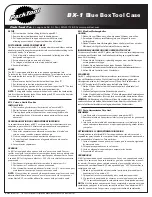
Galaxy A16F-R2431 Installation and Hardware Reference Manual
4-6
System Monitoring Overview
terminal connected through the COM ports or the LCD keypad panel.
Device status information can be obtained from the FW. The subsystem
can be connected to a management computer through the COM1 serial
port using the included serial port cable. Firmware functionalities are
fully described in the
Fibre-to-SATA RAID Subsystem Operation
Manual
that came with your subsystem.
•
RAIDWatch:
RAIDWatch is a fully integrated, Java-based, Graphical
User Interface (GUI) that came with the subsystem and can be used to
monitor and maintain the subsystem over standard TCP/IP. The
Ethernet port provides access to your array form a management
computer over LAN/WAN.
The RAIDWatch Panel View is customized to display a direct
representation of subsystem components via its graphical interface.
RAIDWatch’s graphical content panel allows you to quickly determine
the operational status of all components. Please refer to the RAIDWatch
User’s Manual for further details.
•
Configuration Client:
Configuration Client is a powerful module that
runs as a software program independent from RAIDWatch and can be
installed on different management stations. It is used for event
notification via email, fax, LAN broadcast, SNMP traps, MSN
Messenger, SMS (Short Message Service), and the configuration utility
screen. Configuration Client helps prevent blind time and keeps you
constantly aware of system status. Instructions on activating
Configuration Client functionality are given in the
RAIDWatch User’s
Manual
.
•
LEDs
: Device-status-indicating LEDs are located on all active
components. The LEDs inform you of the integrity of a given
component or a given link. You should become familiar with different
LEDs that are present on the subsystem and their functions. (See
Section 4.4
)
•
Audible alarm:
A beeper comes with the RAID controller board and
will be triggered if any of a number of threatening events occurs. These
events usually jeopardize the functional integrity of the controller board
and must be heeded at all times. Events such as a breaching of the
temperature threshold will trigger the alarm. If a subsystem manager is
present, he can use any of the management tools to determine the cause
of the alarm and take appropriate measures. (See
Section 4.5
)
•
I
2
C:
An I
2
C bus connects to sensors or detection circuits that reside on
PSUs, backplane, cooling modules, and RAID controller board. (See
Section 4.6
)















































